Spotlight on Carter McCall
Dec 11, 2015
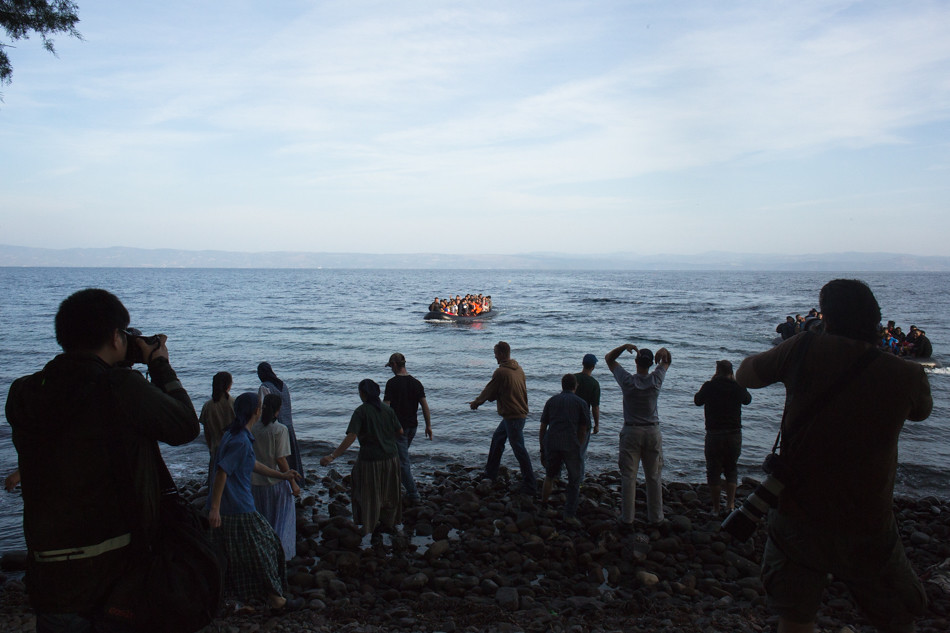
TID:
Thanks for being open to this, Carter! I’m glad we get to connect in an interview - you were in a class of mine at UNC, and I was impressed to hear that you were making the journey. Can you begin by telling us your motivation to go?
CARTER:
Thanks Ross. I consider that class I took with you last year a major leap forward in my photography, at a time when I was looking for a direction and a voice. Up to that point, I felt like I was taking photographs just to take them and not trying to figure out what I wanted to say, and why I wanted to photograph certain things. My brain was constantly wracked with questions and self doubt. For a long time those questions spurred a lot of inaction. I felt like I had to reconcile every single question, get all my mental ducks in a row, to justify going after a project. But what I have begun to understand is the process of documentary photography and that it’s about exploration. The questions are just the starting point. You have to take a leap at some point and go after a project to get those questions answered, or you’ll never do anything, because you’re waiting for the right moment that’ll never really come.
I think the question that spurred this project Lesvos was pretty simple: “where the hell is Lesvos?” Over the summer the place kept showing up in the news I read about the migrant crisis with very little information about it. I started googling around and reading more and learned how it had a major entry for refugees seeking asylum in Europe. There was all this coverage and I kept seeing all these really amazing harrowing images of drenched people in life jackets jumping out of rubber boats on the beach. I began to understand the scope and the importance of this event and this place in human history. But I saw nothing really about the island itself. This was a small piece of land where people from vastly different circumstances across the globe were coming in contact and I was only getting to see the very beginning of that interaction when they got off the boats. What were these people doing after they got off the boat? Where did they go? Was anyone helping them? Something this big felt too distilled in the same images I kept seeing over and over.
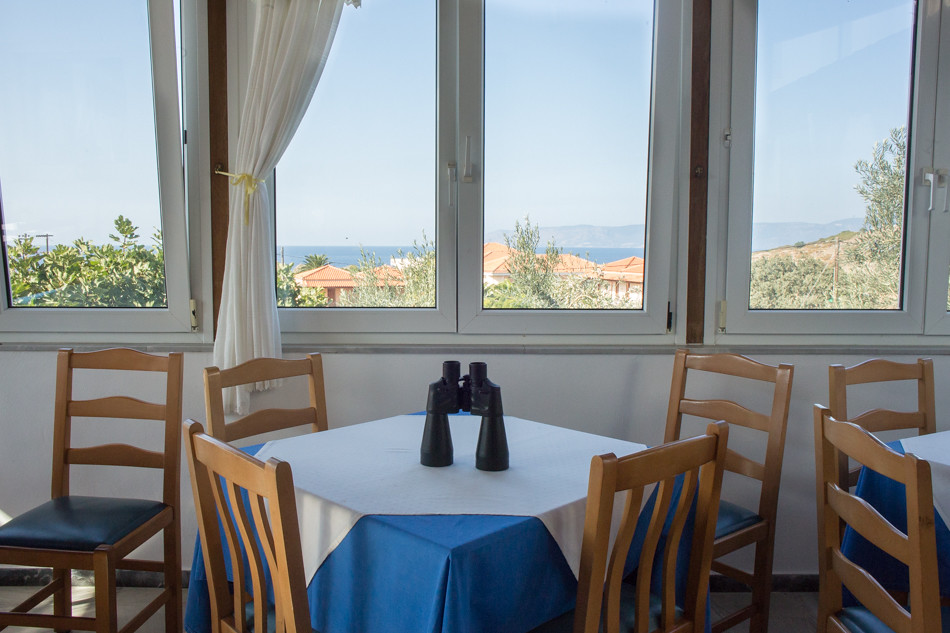
At the end of the summer, I had just moved to New York City for freelance work and basically had all this new creative energy I was looking to apply to something. I stumbled across a volunteer organization on Facebook with an open call for volunteers to come to Lesvos to help. What volunteers and locals said was happening in the Facebook group really broke my heart. I felt I had two opportunities: the first was to try to photograph a different perspective of the island, the second was to volunteer and help people if I totally failed on the first. I booked a flight and told the volunteer group I would be there in a few weeks.
TID:
Can you talk about what it was like the first few days for you?
CARTER:
The first few days were pretty rough. I was definitely exposed to much more than I think I realized I would. It was a fairly bizarre situation because there is major humanitarian crisis happening in a European vacation hot spot. The first day I went from being on the beach watching boats with crying families arrive to sitting in a breezy open air cafe talking to a bunch of Greek mothers drinking coffee, and talking about how the migration was starting to really hurt tourism. It’s not like there is like a frontline or a refugee camp that you can travel to back and forth from. The Greek coast guard was dropping people off right in the harbor near the middle of town. I think in extreme circumstances our brains start switching on these reality checks: “Am I really here right now?” “What’s going on?””What am I doing here?” It’s difficult when you do something like this alone because you lack external support and structure to ground yourself. I mean I didn’t have an publication or an editor behind me so who was I going to call? My mom? My strategy was to constantly reorient myself and say “You’re here now. You know why you want to be here. Go make it work.”
Luckily, almost everyone staying at my hotel was a volunteer or working for an NGO. Maria, the owner of the hotel, was a great resource and helped me get started. The volunteer organization I connected with had a orientation the second day I was there and I was able to get the lowdown and sign up for a time to volunteer at the camp they had set up nearby. I asked everyone I met those first two days every question I had. I found out the cheapest place to rent a car and the best place to grab a bite to eat and grab some wifi. I learned step-by-step how the migrants arrived and travelled across the island. The second night there was a big volunteer meeting and I got to meet a ton of people and tell them why I was there and what I wanted to photograph.
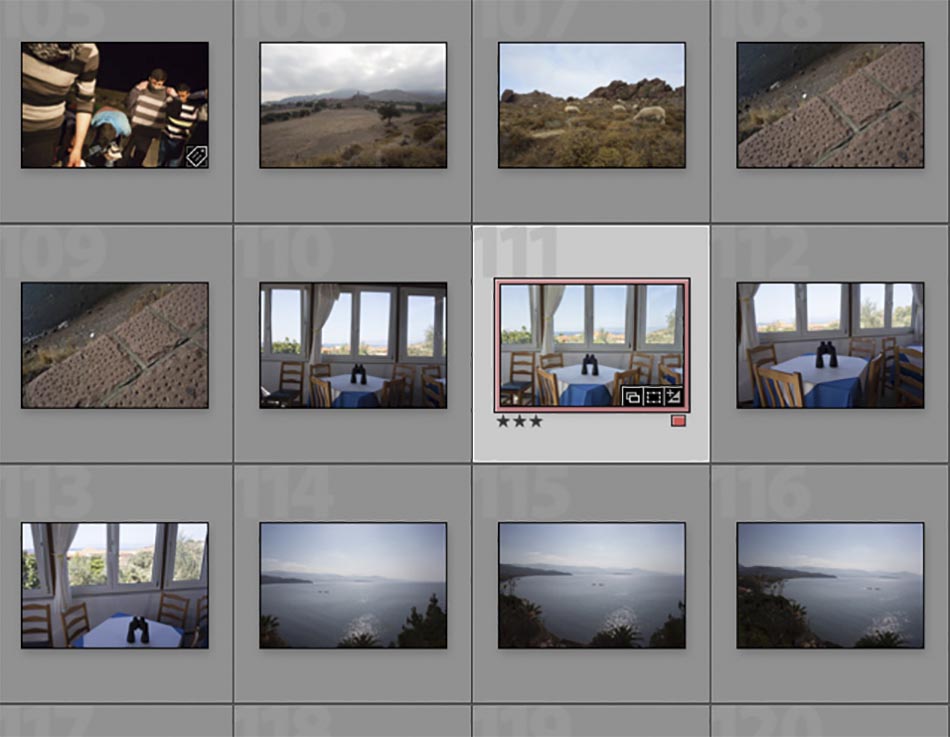
Again, the most surprising thing for me was how all consuming this crisis was on Lesvos. It doesn’t stop. Every hour more people are arriving. You eat lunch and you have migrant families walking by you down the road. There were groups who had just arrived who would wait for buses at the end of the driveway of my hotel almost every morning. I remember one night, I was woken up at 3 am by someone banging on hotel doors asking for help with someone who was hurt. I get absorbed into it almost immediately. My third day was my first day volunteering, and I worked a 14 hour shift. It was hard, but I knew I had come to a place that really needed to be photographed.
TID:
This is not an assignment that you can do without having a lot of problems come up - can you talk about a number of them?
CARTER:
I honestly thought my biggest obstacle would be access to the refugees, but because there is no central authority running the show on the island, access was not a problem. But because there was no central authority on the island, the situation was constantly changing, and it wasn’t always easy to find out what was going on. The registration camps at the south of the island were constantly changing how they registered people which always caused backlog and confusion in the north where I was staying.
Another big problem was language. I didn’t know any Greek nor did I know any Arabic, Farsi, or Urdu. It was difficult at times to communicate with migrants to hear their stories and learn where they came from and where they were going. When I was shooting. I had to make communication really simple and distilled, which I hate because I really like to get to know and open up a relationship with the people I photograph. There were a handful of translators on the island but they were always swamped trying to help people.
A huge problem I encountered was not adequately preparing for the weather. It doesn’t rain much on the island but we had two full days of absolutely terrible rain while I was there. I didn’t bring rain gear for my camera and some moisture got into my lens and camera body, so I lost a day shooting trying to blow dry it out in my hotel room.
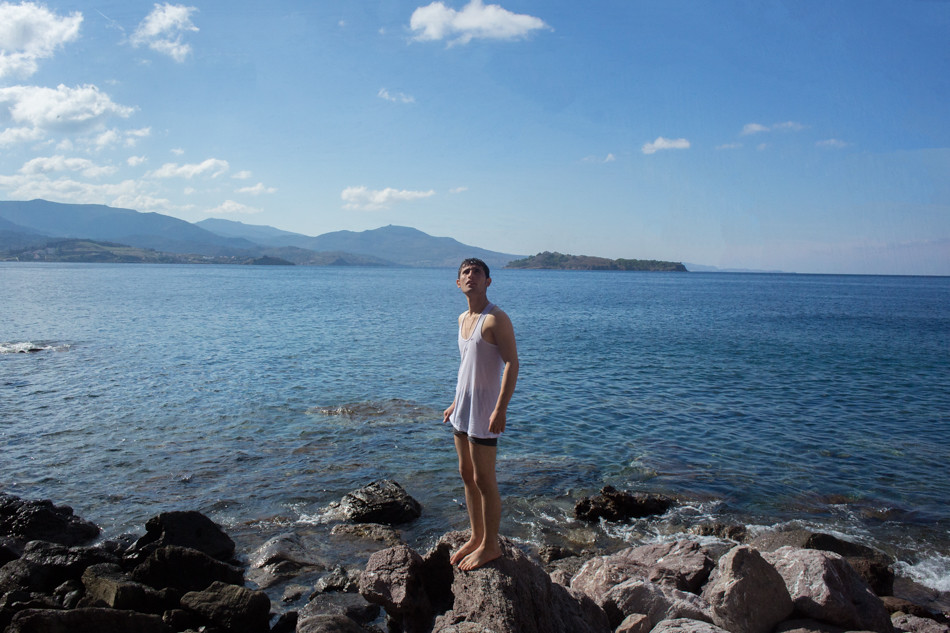
TID:
How did you problem solve for them?
CARTER:
The first issue is you just ask a bunch of questions, and you forge relationships. I tried to constantly stay in the know about what was going on with boats, the camps, and the registration center. There were a few volunteers and locals who had worked on the island and had established a pretty reliable communication pipeline. I just got the lowdown every time I saw them. Also, volunteers had a massive WhatsApp messaging group that people were constantly posting on. It was a really great resource to get real time updates.
I did my best with the language issue. I didn’t realize how lucky I was to speak English, because so many people knew at least some English. I picked up some Arabic through volunteering which at least helped with the basics of communicating with refugees and finding out where they were from and where they were heading. It totally helps with trust if you try to speak to someone in their native language. I think it shows that you care about them but also it is an ice breaker because they will usually laugh as you fumble through some word or phrase and they have to help you. It also didn’t hurt that many of the migrants were very kind people. My favorite Arabic word I learned was “habibi.” Its a term of endearment that loosely translates to “my dear friend” or “my sweetheart.” I used it a lot when talking to migrants who were really stressed out or sad. It was a small comfort that I think helped me get to the point where I could photograph people in tense situations. Also, human touch always translates. I usually have some sort of physical interaction with every single person I photograph, whether it s a handshake or a pat on the back. It helps me so much to bring me close to someone and into their experience.
The third problem I just chalk up to experience. I had never worked in the field for an extended period of time and never really pushed my camera the way I did in Greece. A couple frames I took one of the days it rained were ruined because the lens was all fogged over. I got a plastic bag and some tape for the rest of the trip but luckily it never rained again while I was there.
TID:
What were some of the fears you faced? How did you overcome them as well?
CARTER:
Well, going back to the beginning, immediately after I booked the flight I had a total “Oh shit” moment and thought I had made a terrible mistake. I had just moved to New York and hadn’t even really settled down. But I had pretty much already reached the point of no return, so my goal was to ensure that this wasn’t going to to turn out to be an epic dumpster fire of a mistake. I had painted myself into a corner, and I had to work my way out. I spent a few hours a day for the next few weeks absorbing anything I could about the island and doing some serious Facebook sleuthing trying to find contacts on the island and get the lowdown. I wrote down every single question I could possibly think of, and went about trying to find out how I could get an answer. I wanted to be prepared as humanly possible, so I reached out to every person I knew who had done any sort of work in a crisis situation. Despite the crippling fear of utter failure, (which we as photographers all know far too well), I felt fairly confident by the time my trip arrived.
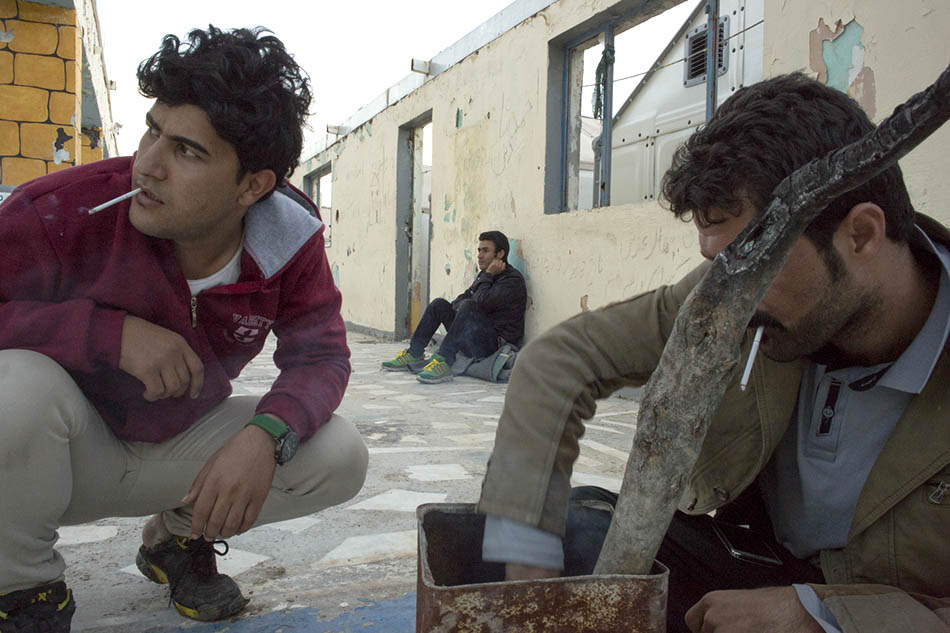
When I was on the island, my biggest fear was missing photographs and not coming away with anything substantial. It was difficult, because I split time between volunteering and photographing. I constantly felt like I was supposed to be doing one when I was doing the other. I remember one time around dusk at the transit camp, this group of young guys started a fire to stay warm. It was really windy and the fire got ridiculously big. I was loading buses and when I saw it, I hesitated for a second and debated whether I should run to help put it out or run back to my car and grab my camera. I decided to go and help put it out but I still kick myself because it would have been a great photo. But, the fire could have very easily set a tent on fire or gotten the migrants kicked out of the camp (the police had a rule about no fires), so I decided it was best to do what I was supposed to do in that moment.
I think the way I split my time helped me resolve a lot of existential questions about photography in my head. I want my photography to be a vehicle for understanding and change, but in the moments I photograph people, I really crave more tangible results sometimes and for me that is motivation to help - whether that’s handing out food or helping a mother with a sick baby get a seat on a bus. I always thought I had to be firmly be in photographer-mode to really capture good images but I realize the way I operate is to engage on a very human level first that will open the doors for great photographs. Eugene Richards is a huge inspiration for me, and knowing that he got his start as a VISTA volunteer in Arkansas makes me feel better about my path and my approach.
TID:
Now, onto the moment. Can you talk about the main image, the moments that were leading up to it - and how you processed the experience?
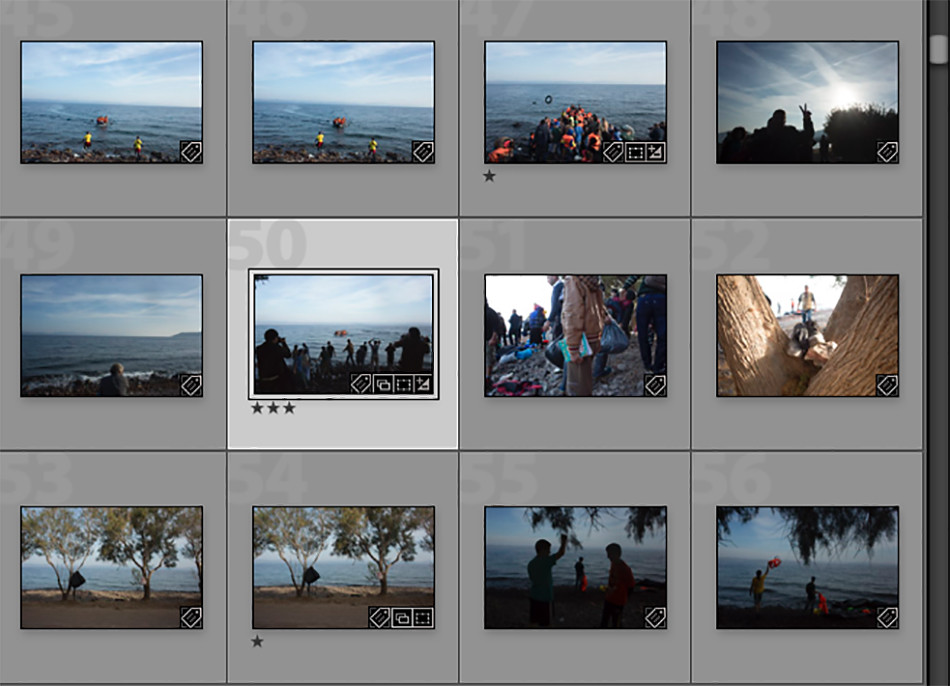
CARTER:
This image was on the first day, within the first four hours of me arriving on the island. I got off the plane at the tiny airport in the south around 5 am. I hadn’t slept in two days and didn’t know how I was going to make my way up to the north. Luckily, I happened to meet another photographer from China at the baggage claim and he offered to give me a lift with a driver he had hired. Driving through Lesvos that first morning was a really surreal experience The coastal road we took was really mountainous with all these winding roads and out of the darkness you would see these groups of migrants emerge as they walked down the road and tried to flag the car down for a ride.
We reached the beach just as the sun came up and it was entirely empty except for tons of discarded lift vests and rubber boats. Again, it was a truly surreal experience. Our driver left and we started hiking up the dirt road to see if we could reach a better spot on the beach where we thought boats would arrive. At that point, I realized I hadn’t ate or drank anything in probably 12 hours and the sun was coming up. I felt myself getting dehydrated because my mouth was getting really dry. Quite suddenly, we see two orange specks in the water between the Turkish coast and ours. I realized they were boats and almost immediately after all these cars, trucks and SUVs come zooming past us to the spot where it looks like they are heading. So we basically start sprinting to the spot not wanting to miss this moment.
We get to the beach where all the cars have stopped and there are probably 20 people all waving lifejackets in the air. They were trying to direct the boats towards them because that was a safe place to land. There were people yelling to the boats, photographers with three or four cameras firing away, volunteers preparing emergency blankets, people chirping on handheld radios. It was this amazing scene and you see these huddle mass of people coming toward you in the water almost silently, staring right at you. I realized this was the moment right before the moment that I had seen a hundred times on the news. It was right before so many lives intersected and this massive geopolitical event occurred. All these people were reaching across this chasm, desperately trying connect with our side and find comfort and safety and we’re on the other side screaming “come here! come here!” I found it really beautiful and sad. I wanted to capture all of it and kind of peel back the curtain on everything we had seen so far from Lesvos. I think I probably took one photo of this moment. I remember standing there looking through my viewfinder kind of dumbfounded. Also, at this point I was starting to go loopy from dehydration and sleep deprivation. I think this photo really set the tone photographically for the rest of my trip. I really felt these quieter photos I was searching for spoke to something I wasn’t seeing from the news.
TID:
How did this trip impact you? What did you learn about yourself that you didn't know before?
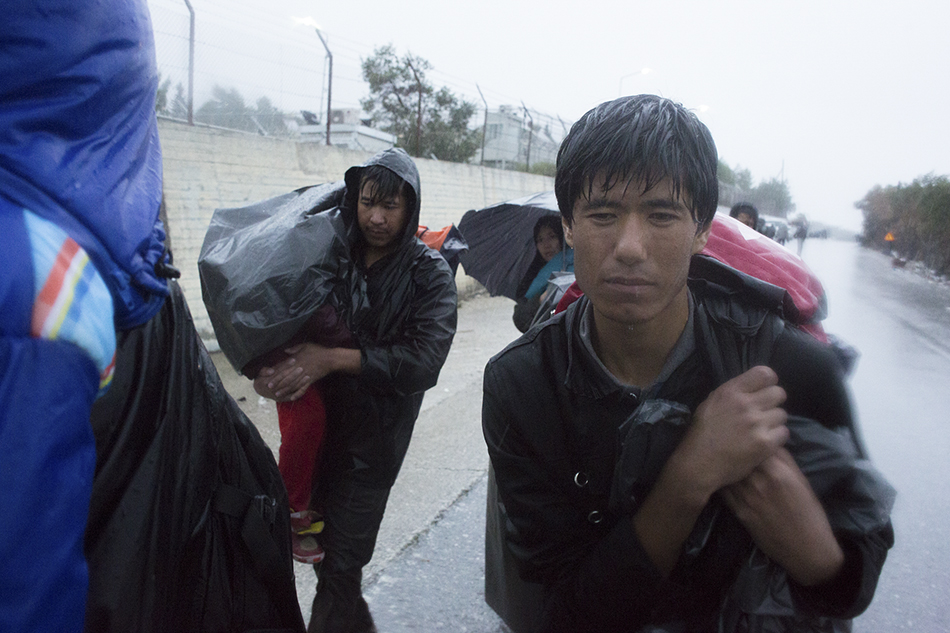
CARTER:
It’s hard to say how it impacted me to be honest. I think the decompression for me has come in waves. I’ll admit that I saw some traumatic things and heard some traumatic stories that I’m still trying to work through. If anything I became deeply attached to this issue. Everyone always says “photograph what you care about” and for the first four years of my photography career I didn’t know what I cared about. I care about this issue because I’ve witnessed it myself. The Syrian war and the subsequent migration will reverberate for decades and I think we are only beginning to understand how it will affect Europe and the United States. We’re all reacting to it and after events like Paris and San Bernardino, there’s a lot of fear around it. I’ve found that I can no longer be passive when it comes to this issue because I’ve been affected by it. I can add something to the conversation and I feel I have a responsibility to do so given the amount of vitriol, fear and anger surrounding Muslims right now.
I think I learned that I also can do really awesome things with little resources. You have to be resourceful in this business and you have to be creative. We have so much potential at our fingertips as visual storytellers with our devices and the internet. We can do so much with so little. Probably my favorite thing I did in Lesvos that most people didn’t see was my Snapchat stories. I recorded a lot of videos and photos from the camps and beaches to give people perspective. I did a whole series where I just shot video on my phone of migrants’ clothes on clotheslines blowing in the wind. Migrants would put their wet clothes up anywhere to try to dry them after they got off the boats. It was such an illuminating facet to the story that I don’t think could have fit anywhere else.
TID:
Additionally, what did you learn about people in this situation that you didn't know before?
CARTER:
It might sound a little absurd but I think the biggest realization is that they are actually people. I mean the word “refugee” conjures up all these really simple ideas about the type of people who are fleeing conflicts. I met so many different types of people who had so many different types of experiences. One project I began to photograph while I was there was the experience of young, single men. They make up a large portion of those coming to Europe and are the source of anxiety and xenophobia in western countries. I think they are written off because their motives for coming to Europe are seen as questionable at best and dangerous at worst. I really wanted to explore their experience and it’s a project I hope to go back to Europe to continue after the New Year.
TID:
What do you think, broadly, people should know about this experience that most people don't?
CARTER:
I think people should realize that the response to this crisis on Lesvos is almost exclusively volunteers. It is regular people who are stepping up to help when no one else can. The Starfish Volunteers, the group I worked with, is run out of a local woman’s restaurant. They are feeding and clothing 5,000 refugees a day with probably 30-40 volunteers at any given time. When I was there, a boat carrying 300 people went down and they were all brought into the harbor by the Greek coast guard. They didn’t have enough medical personnel on the island so volunteers were trained on the spot to administer CPR to children and infants. I don’t believe this is sustainable and I think people need to be aware of the fact that this has been going on for almost a year now.
TID:
Finally, what advice do you have for photographers, especially those who may be just like you (just getting started)?
CARTER:
For a long time I thought there was a magical formula or some sort of insider secret on how to make really meaningful work. I think what I’ve begun to realize is that you just have to work your ass off and take some calculated risks. Fear is a real sonavabitch until you really ask what you’re afraid of and 99 percent of the time it’s usually just the fear of failure before you start a project.
I listen to alot of hip-hop. Rappers are probably some of the hardest working creative types out there. They rap alot about the “game” or the “hustle” and how the odds are always stacked against them but their response is always “Fuck that, I’m gonna be successful.” I think you need a little bit of that mentality and chip on your shoulder to do this. Believe in yourself first because no one else is going to (Outside of your parents. Thanks mom and dad!) until you start producing great work. I wouldn’t say I’m there yet but I think every attempt, good or bad, is another notch in my belt at getting better.

:::BIO:::
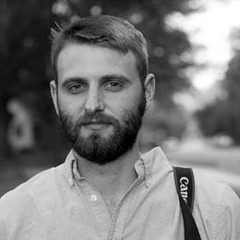
Carter McCall is a documentary photographer and filmmaker currently based in Brooklyn, NY. He has a great appreciation for longform journalism and hip-hop music. His work focuses is on individuals and communities because he believes personal narratives can be vehicles of empathy and understanding.
You can see his work here: